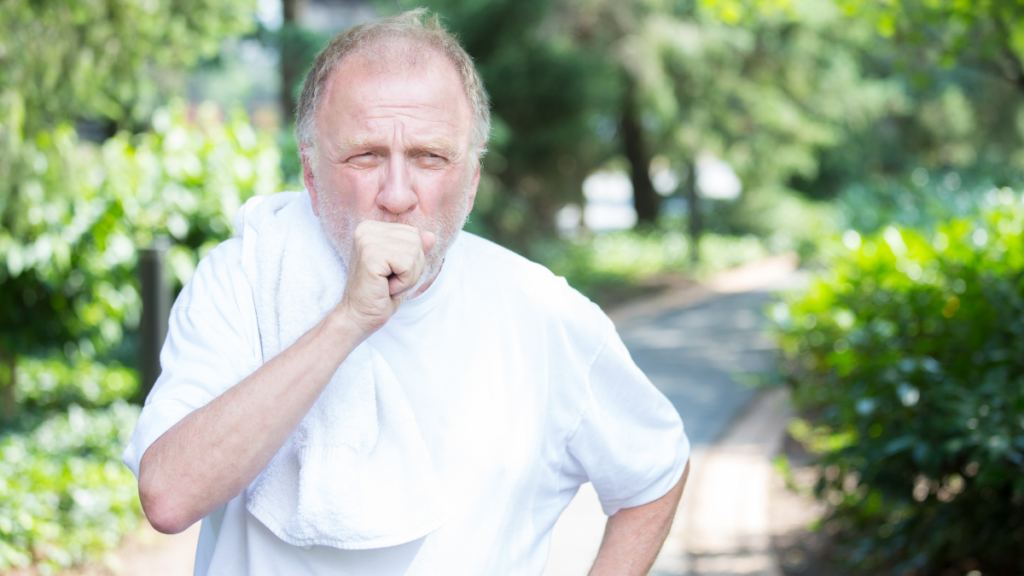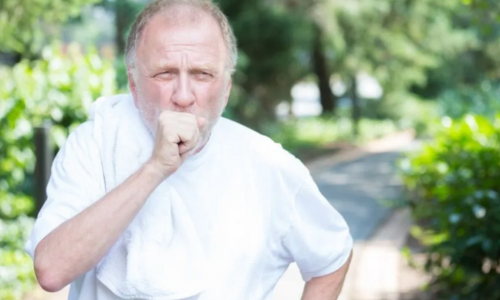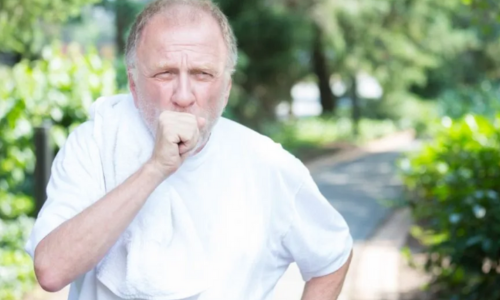
When COPD patients go for long periods with low blood oxygen levels, a doctor will prescribe supplemental oxygen. Oxygen therapy helps prevent heart failure and improves longevity with COPD.
Supplemental oxygen may also be required for COPD patients during certain activities. Exercise can cause shortness of breath that supplemental oxygen can help. Sleeping with oxygen may be necessary if the COPD patient experiences any sleep disorders. And when traveling by air, patients may have to use supplemental oxygen as high altitudes can often aggravate COPD symptoms.
What is COPD?
Chronic obstructive pulmonary disease (COPD) is a chronic lung disease that reduces airflow from the lungs. Patients may experience difficulty breathing, wheezing and a productive cough. COPD is the third leading cause of death by disease in the United States. More than 16.4 million people have been diagnosed with COPD.1
COPD is caused by exposure to lung-damaging polluted air, usually within industrial environments or from long-term cigarette smoking. COPD patients have a heightened risk of other diseases such as heart disease and lung cancer.
What Are the Stages of COPD?
COPD is defined by four stages of severity.
- Stage 1 (Early): Patients begin experiencing mild symptoms, such as frequent cough and shortness of breath. Often, they do not receive a diagnosis.
- Stage 2 (Moderate): The symptoms at this stage begin to impact daily life, with coughing and shortness of breath occurring constantly. Fatigue and trouble sleeping are also associated with this stage of the illness.
- Stage 3 (Severe): Symptoms make simple activities, such as chores and short walks, difficult/impossible for patients.
- Stage 4 (Very Severe): At this stage quality of life is greatly affected. Patients experience little to no ability to breathe independently. At this stage, supplemental oxygen becomes essential.
At Which Stage is Supplemental Oxygen Prescribed in COPD Treatment?
In the early stages of COPD, patients may use supplemental oxygen to manage flare-ups and to continue with normal life. Portable oxygen concentrators are used for travel and home oxygen concentrators helps with symptoms throughout the day. Nebulizers may also be prescribed by doctors, depending on the severity of the illness.
Usually at Stage 4, supplemental oxygen becomes the only way patients can breathe normally. Oxygen tanks or oxygen concentrators are able to provide consistent oxygen therapy.
How Supplemental Oxygen Therapy Helps COPD Patients
Supplemental oxygen improves oxygen flow into the lungs and bloodstream of COPD patients. These concentrators can be set to various flow settings to properly manage the COPD flare-ups. Learn more about the benefits of oxygen therapy for COPD patients.
Will A Humidifier Aid in Treating COPD?
Pure oxygen from either oxygen tanks or oxygen concentrators can be very dry, which can lead to nasal irritation and sore throats. Using a humidifier with an oxygen concentrator moistens the air and helps alleviate these side effects. Most home oxygen concentrators will support an optional humidifier bottle, while portable oxygen concentrators will not.
If you need advice on which oxygen concentrator best fits your COPD supplemental oxygen needs our customer care team is here to help. Give us a call at 888.941.1688 or email us at contact@oxygenconcentratorsuppliesshop.com.
Reference:
- American Lung Association. Learn About COPD. Accessed September 2020.
When COPD patients go for long periods with low blood oxygen levels, a doctor will prescribe supplemental oxygen. Oxygen therapy helps prevent heart failure and improves longevity with COPD.
Supplemental oxygen may also be required for COPD patients during certain activities. Exercise can cause shortness of breath that supplemental oxygen can help. Sleeping with oxygen may be necessary if the COPD patient experiences any sleep disorders. And when traveling by air, patients may have to use supplemental oxygen as high altitudes can often aggravate COPD symptoms.


What is COPD?
Chronic obstructive pulmonary disease (COPD) is a chronic lung disease that reduces airflow from the lungs. Patients may experience difficulty breathing, wheezing, and a productive cough. COPD is the third leading cause of death by disease in the United States. More than 16.4 million people have been diagnosed with COPD.
COPD is caused by exposure to lung-damaging polluted air, usually within industrial environments or from long-term cigarette smoking. COPD patients have a heightened risk of other diseases such as heart disease and lung cancer.
What are the Stages of COPD?
COPD is defined by four stages of severity.
- Stage 1 (Early): Patients begin experiencing mild symptoms, such as frequent cough and shortness of breath. Often, they do not receive a diagnosis.
- Stage 2 (Moderate): The symptoms at this stage begin to impact daily life, with coughing and shortness of breath occurring constantly. Fatigue and trouble sleeping are also associated with this stage of the illness.
- Stage 3 (Severe): Symptoms make simple activities, such as chores and short walks, difficult/impossible for patients.
- Stage 4 (Very Severe): At this stage quality of life is greatly affected. Patients experience little to no ability to breathe independently. At this stage, supplemental oxygen becomes essential.
What is Supplemental Oxygen or Oxygen Therapy?
Oxygen therapy provides supplemental oxygen to those who have lower oxygen levels. The supplemental oxygen is delivered through a breathing mask or nasal cannula and is used to treat a number of respiratory illnesses, including lung diseases, COPD, and more.
At Which Stage is Supplemental Oxygen Prescribed in COPD Treatment?
In the early stages of COPD, patients may use supplemental oxygen to manage flare-ups and to continue with normal life. Portable oxygen concentrators are used for travel and home oxygen concentrators help with symptoms throughout the day. Nebulizers may also be prescribed by doctors, depending on the severity of the illness.
Usually, at Stage 4, supplemental oxygen becomes the only way patients can breathe normally. Oxygen tanks or oxygen concentrators are able to provide consistent oxygen therapy.
How to Determine That I Need Supplemental Oxygen
As stated, you will need supplemental oxygen when your oxygen levels are low. Some common signs that you have low oxygen include:
- Tiredness
- Irritability
- Swollen ankles
- Poor concentration
How Supplemental Oxygen Therapy Helps COPD Patients
Supplemental oxygen improves oxygen flow into the lungs and bloodstream of COPD patients. These concentrators can be set to various flow settings to properly manage the COPD flare-ups. Learn more about the benefits of oxygen therapy for COPD patients.
Does Supplemental Oxygen Have any Side Effects?
Although oxygen is safe to use, there could be some potential side effects. They include:
- Dry, bloody nose
- Morning headaches
- Sinus infection
Will a Humidifier Aid in Treating COPD?
Pure oxygen from either oxygen tanks or oxygen concentrators can be very dry, which can lead to nasal irritation and sore throats. Using a humidifier with an oxygen concentrator moistens the air and helps alleviate these side effects. Most home oxygen concentrators will support an optional humidifier bottle, while portable oxygen concentrators will not.
Key Takeaways
Although being prescribed supplemental oxygen can be new and uncomfortable for some, it is important to listen to your doctor and get the treatment you need. The Oxygen Concentrator Supplies Shop sells a variety of oxygen concentrators and supplies to help patients continue living an active life. If you would like to learn more about any of the products we offer, please call us at 888-941-1688 today!



